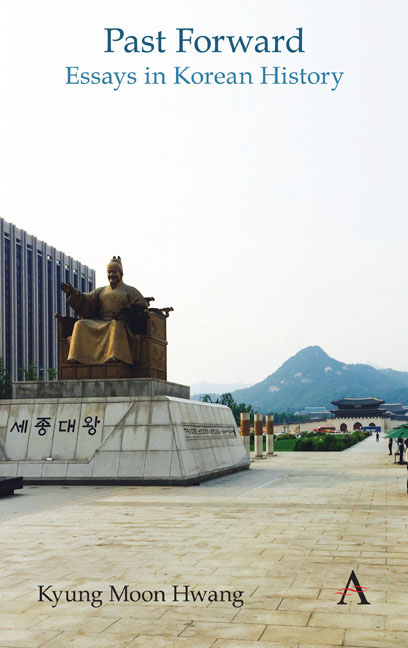Book contents
- Frontmatter
- Contents
- List of Figures
- Foreword
- Chronologies of Korean History
- Themes
- Acknowledgments
- Note on Romanization and Spelling
- Part I Circulating History
- Part II Durable Traditions
- Part III Ancient Remains
- Part IV Dynastic Depths
- Part V Modern Origins
- Part VI Challenges of Nationhood
- Part VII History Makers
- 41 Demythologizing King Sejong the Great
- 42 Modern Lady Shin Saimdang
- 43 Five Potential National Heroes
- 44 A Portrait of Great Painters
- 45 Four Young Men from 1884
- 46 Na Hye-seok
- 47 Hyundai Motors and Chung Ju-yung
- 48 Yun Isang and the East Berlin Case
- 49 Ri Young-hee, Iconoclast for Democracy
- 50 Kim Young Sam's Broad Historical Appeal
- 51 Kim Dae Jung's Historic Election
- Part VIII External Presences
- Part IX Trials of Modernization
- Part X Gripped by the Past
- Index
50 - Kim Young Sam's Broad Historical Appeal
from Part VII - History Makers
- Frontmatter
- Contents
- List of Figures
- Foreword
- Chronologies of Korean History
- Themes
- Acknowledgments
- Note on Romanization and Spelling
- Part I Circulating History
- Part II Durable Traditions
- Part III Ancient Remains
- Part IV Dynastic Depths
- Part V Modern Origins
- Part VI Challenges of Nationhood
- Part VII History Makers
- 41 Demythologizing King Sejong the Great
- 42 Modern Lady Shin Saimdang
- 43 Five Potential National Heroes
- 44 A Portrait of Great Painters
- 45 Four Young Men from 1884
- 46 Na Hye-seok
- 47 Hyundai Motors and Chung Ju-yung
- 48 Yun Isang and the East Berlin Case
- 49 Ri Young-hee, Iconoclast for Democracy
- 50 Kim Young Sam's Broad Historical Appeal
- 51 Kim Dae Jung's Historic Election
- Part VIII External Presences
- Part IX Trials of Modernization
- Part X Gripped by the Past
- Index
Summary
Former South Korean president Kim Young Sam's death in November 2015 prompted much thinking about the historical significance of this man. Perhaps the greatest testimony to his impact came from the wide disparity of voices in the public realm that mourned his death. Prominent people and groups across the political and ideological spectrum claimed him as one of their own, as someone who had exerted profound influence on their particular group's perspectives and interests.
This may have much to do with Kim's very long political career, which began in the early 1950s and continued past his presidency of 1993–1998. More specifically, that both of South Korea's main political parties, in an age when the ideological rivalry between them was so bitter, could publicly revere him stemmed from his long-standing leadership in the fight for democracy. But equally important was Kim's decision in 1990 to “switch sides” and join the conservative forces for political expediency. This gave the conservative camp, up to this day, reason to proclaim themselves rightful heirs to the drive for democracy. In sum, the competing historical views that frame much of politics in contemporary South Korea accounted substantially for the outpouring of praise for Kim Young Sam across the political divides.
To progressives, Kim's decision to literally join hands with President Roh Tae-woo and Kim Jong-pil, the two most visible holdovers from the era of military dictatorship, in forming a large, coalitional ruling party constituted nothing short of a betrayal to the democratic cause. Since the 1970s, in political circles this struggle had featured the “Two Kims,” Kim Young Sam and Kim Dae Jung, as part of a much broader anti-dictatorship movement that included the economic, cultural and religious realms.
It was perhaps his rivalry with the other Kim that led Kim Young Sam to conclude that joining the conservative camp in 1990, a move that he once described cryptically as “entering the tiger's lair to catch the tiger,” as his best chance to win the presidency. And despite the sharp backlash from his former allies in the democracy camp, Kim probably felt secure in his identity and legacy. He had, after all, stood at the forefront of the resistance to the Yushin dictatorship of Park Chung-Hee in the 1970s.
- Type
- Chapter
- Information
- Past ForwardEssays in Korean History, pp. 148 - 150Publisher: Anthem PressPrint publication year: 2019



